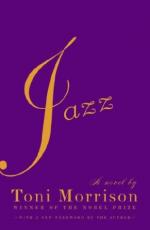|
This section contains 11,260 words (approx. 38 pages at 300 words per page) |

|
SOURCE: “Adorno, Ellison, and the Critique of Jazz,” in Cultural Critique, Vol. 31, Fall, 1995, pp. 129-158.
In the following essay, Harding discusses the jazz criticism and theories of Theodor Adorno, which he then applies to Ralph Ellison's novel The Invisible Man.
All totaled, Theodor Adorno wrote seven essays on jazz: three in the thirties, two in the forties, and two in the early fifties. His portrait of jazz was never flattering and was highly idiosyncratic. In the thirties, Adorno's criticisms of jazz functioned as the negative critical movement in what can be described as his dialectical embrace of Walter Benjamin's classic essay “The Work of Art in the Age of Mechanical Reproduction” (Arato and Gebhardt 270; Daniel 41-42). For while a polemic against technology endures throughout Adorno's subsequent writing on jazz, extending well into the sixties and framing his discussion of jazz in Dissonanzen (1962), Thomas Levin has recently noted that...
|
This section contains 11,260 words (approx. 38 pages at 300 words per page) |

|


